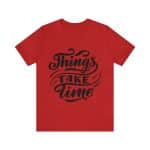Have you ever awakened from an extraordinary dream only to find its details slipping away like sand through your fingers? You’re not alone. Remembering dreams can be a challenge. But with a few straightforward techniques, you can increase the likelihood of recalling your nocturnal adventures.
Establish a Regular Sleep Schedule
The first step in dream recall is establishing a consistent sleep routine. Going to bed on a tight schedule and waking up at approximately the same precise time each day harmonizes with your body’s internal clock, making it easier to slip into dream-filled REM sleep. Furthermore, getting sufficient sleep (generally 7-9 hours for adults) ensures you cycle through multiple REM stages, increasing the chances of experiencing and remembering dreams.
Stay Still Upon Waking
Try to hold off on your morning stretch when you first wake up. Physical movement can cause you to forget your dreams rapidly. Instead, lie still and keep your eyes closed. Concentrate on any thoughts or images that come to your mind, as these can often be remnants of your dream.
Reflect and Rehearse
In the moments after waking, try to reflect on your dream. What happened? Who was in it? Where were you? Remembering as many details as possible; the more precise and abundant, the better. Then, rehearse these details in your mind a few times. Doing this strengthens the neural pathways associated with these memories, making it easier to remember your dream later.

Keep a Dream Journal
A dream journal is an excellent tool for improving dream recall. Keep it by your bedside and jot down your dreams as quickly as possible after waking while they’re still fresh in your memory. Over time, you’ll likely remember more of your dreams, and they become more vivid. Plus, it’s a fascinating record of your subconscious mind!
Use a Dream App
If you’re tech-savvy, consider using a dream app. Many available options can help you track your dreams, analyze common themes, and even wake you during REM sleep when you’re most likely to dream.
Sure, here are a few apps that can help people remember their dreams:
- Dream Journal Ultimate: This app is available for iOS and Android devices. It allows users to record their dreams in detail and includes a dream dictionary and a forum where users can share theirs.
- DreamCatcher: This app is also available for both iOS and Android devices. It has an easy-to-use interface, which eases the process of recording recorded dreams. One impressive feature allows users to set reminders to wake up during the night so that they can record theirs as soon as they wake up.
- Lucidity Dream Recorder: This app is only available for iOS devices. It uses sensors to track your sleep and wake you up during REM sleep when you are most likely to dream. It also includes a dream journal and a dream analysis tool.
- Dream Diary: This app is available for both iOS and Android devices. It is a simple dream journal app that allows users to record their dreams in text or voice. It also has a feature that empowers users to track their dream frequency and length.
These are just a few available apps to help people remember their dreams. But, of course, the best app for you will depend on what you want.
Here are some tips for using dream journaling apps:
- Set a regular time to record your dreams. A recorded entry at a set time will help you to turn it into a lifelong habit and to remember yours more easily.
- Be as detailed as you can when recording your dreams. The more details you add for review, the better you understand your visions and their meaning.
- Don’t be afraid to interpret your dreams yourself. Many resources are available to help you analyze yours, but you can also do it independently.
- Share your dreams with others. Talking about yours can help you to understand them better and to connect with others who have had similar experiences.
Try the Mnemonic Induction of Lucid Dreams (MILD) Technique
Developed by Stephen LaBerge, a prominent researcher in lucid dreaming, the MILD technique involves telling yourself that you’ll remember your dreams as you’re falling asleep. This kind of self-suggestion can significantly enhance dream recall.
Healthy Lifestyle and Diet
Maintaining a healthy lifestyle can indirectly boost your dream recall. For example, regular exercise, a balanced diet, and reduced intake of alcohol and caffeine can all contribute to better sleep quality, which can lead to more vivid and memorable dreams.
Dreams are a rich source of creativity and insight, a window into our subconscious minds. By practicing these techniques, you can unlock the power of your dreams and gain a deeper understanding of yourself. Happy dreaming!





